Tree-Based Containers
This section describes tree-based containers. It is organized as follows.
- Overview describes an overview.
- Node Invariants describes node invariants.
- Additional Types and Methods describes additional methods
that tree-based containers support.
Figure
Tree-based containers
shows the container-hierarchy; the tree-based container is circled.
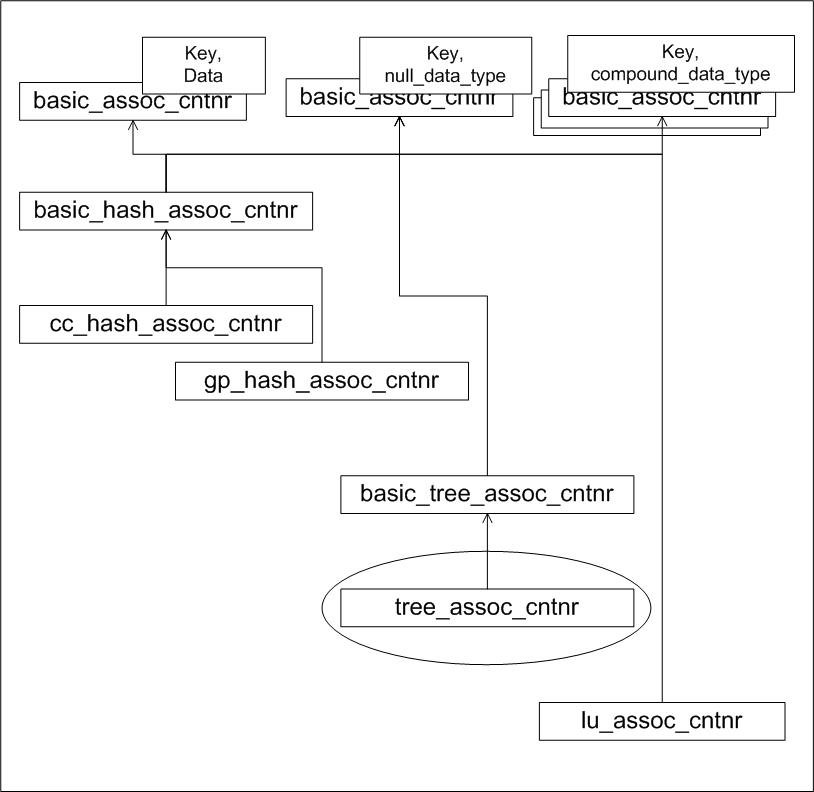
Tree-based containers.
The tree-based container has the following declaration:
template<
typename Key,
typename Data,
class Cmp_Fn = std::less<Key>,
class DS_Tag = rb_tree_ds_tag,
class Node_Updator = null_node_updator,
class Allocator =
std::allocator<char> >
class tree_assoc_cntnr;
The parameters have the following meaning:
- Key is the key type.
- Data is the data-policy, and is explained in
Mapping-Semantics Genericity::Data Types as a Policy.
- Cmp_Fn is a key comparison functor
- DS_Tag specifies which underlying data-structure to use, and is described shortly.
- Node_Updator is a policy for updating node invariants.
This is described in Node Invariants.
- Allocator is (surprisingly) an allocator type.
The DS_Tag specifies which underlying data-structure to use.
Instantiating it by
rb_tree_ds_tag,
splay_tree_ds_tag,
or
ov_tree_ds_tag,
specifies an undelying
red-black tree,
splay tree,
or
ordered-vector tree.
any other tag is illegal. Note that containers based on the former two contain more types and methods than the latter (e.g., reverse_iterator and rbegin), and different exception and invalidation guarantees.
Figure
Some node invariants
shows some node invariants. A shows
a tree whose each node contains, asides from an double key, the number
of nodes at the subtree rooted at the node; B shows a tree whose each node
contains, asides from a line-interval key, the maximal endpoint of the interval
of any node in the subtree rooted at the node.
The first tree allows querying efficiently what is the order statistic
of any element; the second tree allows querying efficiently if any, or which,
intervals overlap a given interval.
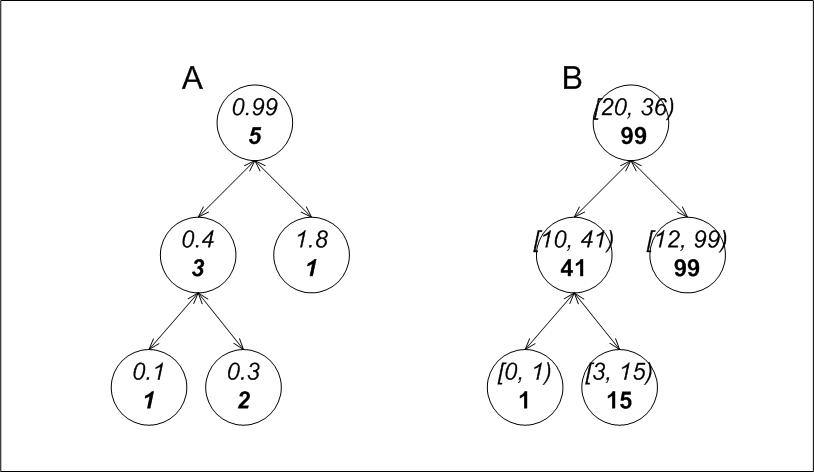
Some node invariants.
Maintaining such trees is difficult, for two reasons:
- Various operations can invalidate node invariants.
E.g., Figure
Invalidation of node invariants
shows how a right rotation, performed on A, results in B, with nodes x
and y having corrupted invariants (the greyed nodes in C);
Figure
Invalidation of node invariants
shows how an insert, performed on D, results in E, with nodes x
and y having corrupted invariants (the greyed nodes in F).
It is not feasible to know outside the tree the effect of an operation on the
nodes of the tree.
-
Even if node invariants are maintained, it is not possible to know
in advance which search paths are required (e.g., searching for all
line intervals overlapping some interval might require several search paths).
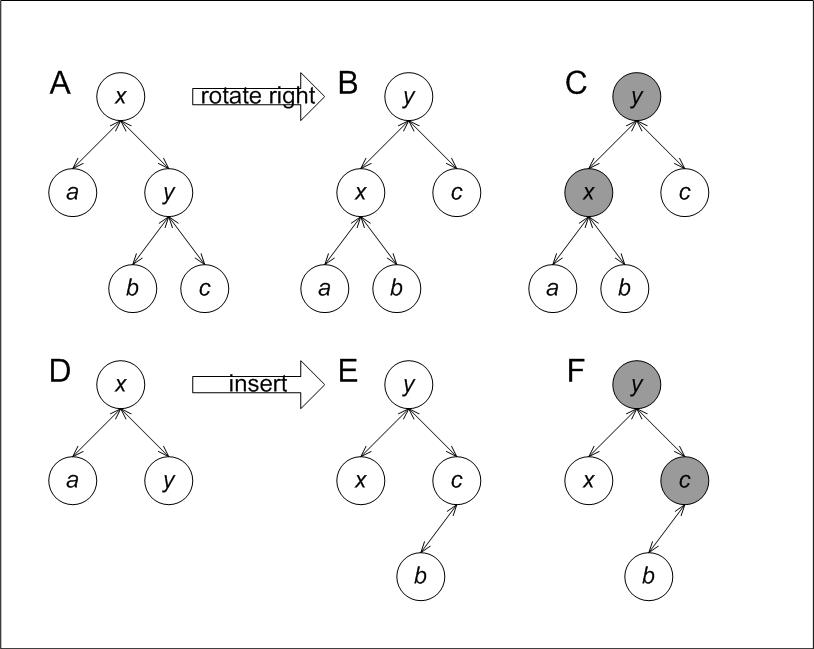
Invalidation of node invariants.
These problems are solved by a combination of two means:
-
The tree-based containers are parameterized by a Node_Updator
parameter. When a tree operation might invalidate some node invariant,
a Node_Updator object is invoked to restore the invariant. This object is
always invoked with three nodes: some node, say x in
Figure
Invalidation of node invariants-A
has an invalid invariant, but its children, y and z hav valid invariants.
After the invocation, all three nodes have valid invariants, as
in
Figure
Invalidation of node invariants-B.
It is well known that any insert, erase,
split or join, can restore
all node invariants by a small number of node invariant updates
[clrs2001].
For example, Figure
Insert update sequence diagram
shows an insert operation (point A); the tree performs some operations, and
calls the update functor three times (points B, C, and D).
-
The tree based containers all define internally node_iterator
and const_node_iterator, iterators which can be used to traverse
from a node to any of its children or parent.
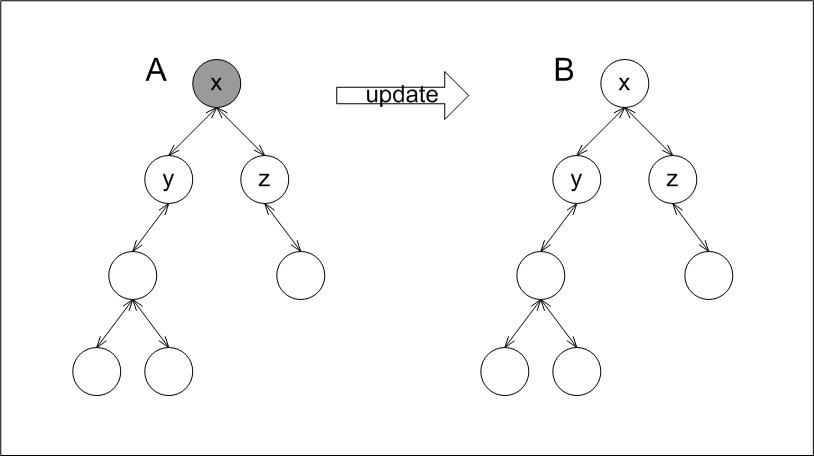
Invalidation of node invariants.
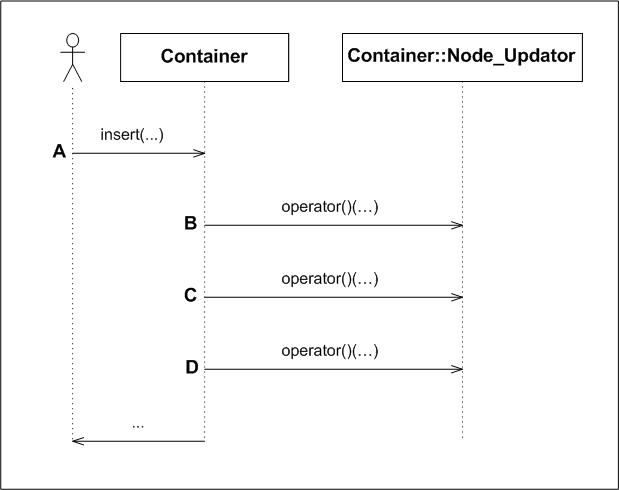
Insert update sequence diagram.
In
Null Policy Classes
a distinction was made between redundant policies
and null policies.
Seemingly, in this case a redundant policy - a policy which doesn't
affect nodes' contents would suffice in this case. This, however, would
lead to performance loss.
Figure
Rationale for null node-invariant functors
shows a typical case where invariants are restored (in this case, to the
shaded node). In most cases, tree operations such as rotations affect only
the lower levels of the tree. A null policy allows to know that there
is no need to traverse the tree to the root.
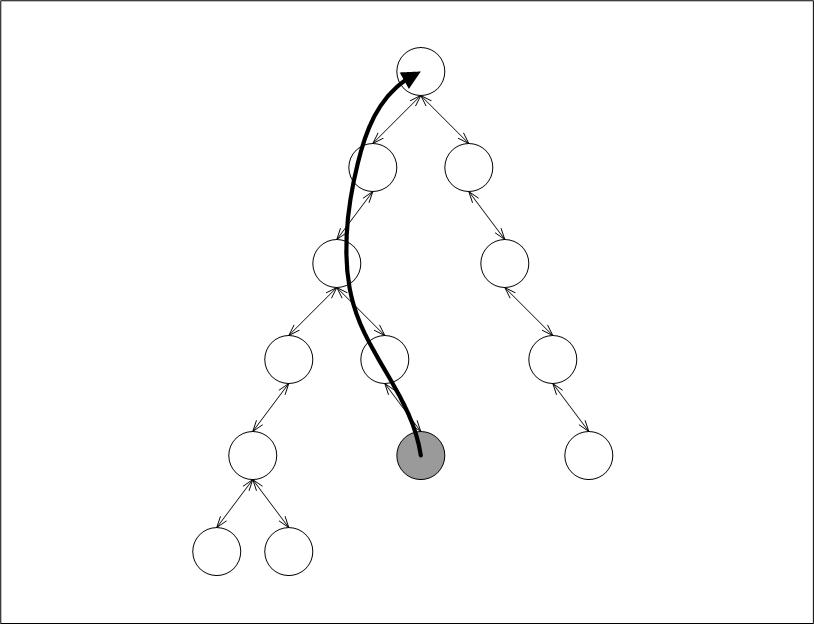
Rationale for null node-invariant functors.






